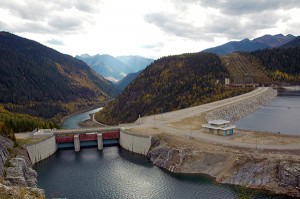Home »

Keeping rates affordable, investing in the future
Letter to the Editor
Our electricity rates are the envy of many places in North America and around the world.
A friend asked me the other day why, in the midst of a falling Canadian dollar and $8-a-head cauliflower, BC Hydro is increasing electricity rates again on April 1. I often get this question, or ones like it, from the people who live and raise their families in my community of Cranbrook.
While no one likes to see rates go up, as energy minister, I’m always grateful for the opportunity to explain how B.C. has some of the lowest electricity rates in Canada and the world, and one of the most reliable electricity grids. In fact, adjusting for inflation, electricity costs the same today in B.C. as it did back in 1976.
Our government is committed to keeping rates affordable for B.C. families, while also ensuring BC Hydro makes the necessary investments in infrastructure to meet growing demand for electricity and keep our system one of the most reliable on Earth.
On April 1, BC Hydro entered year three of its 10-year plan that responsibly manages rates – keeping them as low as possible while also funding investments in aging assets and new infrastructure to keep our electricity system affordable, reliable and sustainable.
Each year Hydro Quebec publishes a study that compares electricity rates across major North American cities. Last year’s study showed that the average bill for a B.C. household using 1,000 kilowatt-hours of electricity was $143.
In Halifax, a typical bill is $223 and in Ottawa the average is $207. That means electricity bills for Canadians living in Ottawa are almost $800 more than the average annual cost in B.C.
Meanwhile in the U.S., bills in Boston are three times higher than in Vancouver. And in New York, the average comparable bill is $402; 280% higher than Vancouver.
Also, at a time when leaders around the planet are uniting to fight climate change, in 2015, 97.9% of the energy generated in B.C. was from clean or renewable resources. That means our CO2 emissions from generating electricity are roughly 1/40th and 1/80th of the mainly coal-powered nations of Germany and Australia, respectively.
What’s behind our 10-year rates plan?
The cornerstone of British Columbia’s electricity system is our hydroelectric dams – whose average age is 45 years.
The last dam built in B.C. was in the 1980s and one of the facilities BC Hydro is currently upgrading – the Ruskin dam and powerhouse near Mission – is more than 80 years old.
Existing infrastructure is near or at capacity and much more work must be done if we’re going to meet the electricity needs of a province that’s expected to add over a million people in the next 20 years.
That’s why BC Hydro is investing, on average, $2.4 billion a year on infrastructure over 10 years.
We’re investing now – not letting our asset deficit grow like other jurisdictions have. This helps us to keep rates low, our system reliable, and the construction work will also create jobs and grow our economy: 123,000 jobs and contribute $13 billion to B.C.’s GDP.
In the past year alone, BC Hydro has completed the following capital projects:

– Addition of generating capacity of 1,000 megawatts – enough to power 80,000 homes – through the installation of generating units five and six at the Mica dam and powerhouse north of Revelstoke.
– The Interior to Lower Mainland transmission line, a 270-kilometre line stretching from Merritt to Coquitlam that helps bring power from our facilities on the Peace and Columbia river systems to the Lower Mainland and Vancouver Island. The toughest section of the line, running across the Fraser River over two railways and a highway before going up and over a mountain near Spuzzum, was completed ahead of schedule.
– The G.M. Shrum turbine replacement project at the W.A.C. Bennett dam, which involved refurbishing five generating units at the province’s largest facility, completed $87 million under budget.
Over the last five years, BC Hydro has completed over 560 capital projects totalling almost $4 billion dollars – and delivered these projects almost two per cent under budget.
BC Hydro is also building the Site C dam, a crucial project that is necessary to meet future demand and endow our children and grandchildren with low cost, clean power. However, it’s important to note that the Site C project has no impact on today’s rates. BC Hydro ratepayers won’t begin paying for that project until it’s completed in 2024.
Government is also doing our part to keep rate increases as low as possible. Under the 10-year rates plan, we committed to reducing dividend payments to the province over five years starting in fiscal 2018 to allow BC Hydro to keep more cash for infrastructure investments.
Over the last five years, BC Hydro has worked hard to manage its costs – finding $391 million in cost savings, and limiting overall cost increases to an average of 1.4%, an accomplishment not matched by many private businesses.
BC Hydro is also helping customers reduce the amount of electricity they use and reduce their hydro bills. Over the next three years, BC Hydro will invest an average of $125 million per year in conservation programs – an increase of $124 million from what was invested in 2001.
Our government wants to keep electricity rates low for families, and as our economy grows, make sure there is a dependable source of clean energy for businesses and industry when they need it.
The 10-year rates plan was carefully built to ensure we have the revenues to build and maintain a system that will continue to deliver electricity reliably and affordably for decades to come.
We are proud that British Columbia has one of the most affordable, reliable and green electricity systems in the world, and are committed to making sure our children and grandchildren have the same benefit.
Bill Bennett,
Minister of Energy and Mines







